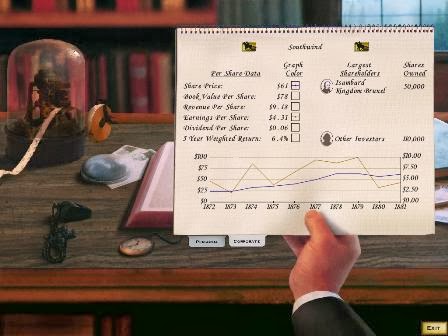Numerous academia and literature have impressed upon us that active investors like us cannot beat the index. This large no. of academia and literature cannot be wrong. Nevertheless, after reviewing the returns of the Straits Times Index (STI) over the past 26 years, I have an inkling that we might be able to beat the index after all.
Over the past 26 years from Jan 1988 till Nov 2013, the returns of the Dow Jones Industrial Average, Standard & Poor's 500, Nasdaq Composite and Hang Seng Index have averaged (computed as geometric average) about 8.5%, 7.8%, 10.0% and 9.3% respectively. The returns of STI, in contrast, averaged about 5.0%, similar to FTSE's return of 5.2%. The only index among those studied that performed worse than STI is the Nikkei index, which returned -1.6%. At a return of 5.0%, it should not be difficult in beating the index.
To understand the poor performance of STI, I collected the price of the 30 component stocks of STI (the prices are available only from 2000 onwards from Yahoo! Finance) and computed their individual performances. It turned out that on an equal-weighted basis (i.e. all component stocks have equal weights in the index), the return since 2000 is actually much higher, at 9.7% compared to 3.9% for the STI. See the table below for the computation. (Note that there are gaps in the prices
due to corporate actions. For example, SPH, prior to Jun 2004, was
priced around $20. After a 5-for-1 stock split, the price became around
$4. The data from Yahoo! Finance only recorded the price after the stock
split but not before. Nevertheless, it does not significantly affect
the conclusion below.)
 |
| Returns of STI Component Stocks (Without Dividends) |
The reason for the lower performance of STI is because stocks with higher market capitalisation are given higher weights in the index. The 10 stocks with the highest weights are namely DBS, OCBC, Singtel, UOB, Keppel Corp, Jardine Matheson, Jardine Strategic, Genting Singapore, Global Logistics Properties and Hong Kong Land in that order. These stocks have a total weight of 65.7% in the index. If we consider only the first 4 heavyweight stocks (namely, DBS, OCBC, Singtel and UOB), which have a combined weight of 40.9%, their return since 2000 is only 2.9%. This pulled down the performance of the rest of the STI component stocks.
If we include dividends, the results would be similar. The average return of STI is 6.7%, which is slightly less than that of the 4 heavyweight stocks of 7.5%. In contrast, the average return for a portfolio of equal-weighted STI component stocks is 14.1%.
If we include dividends, the results would be similar. The average return of STI is 6.7%, which is slightly less than that of the 4 heavyweight stocks of 7.5%. In contrast, the average return for a portfolio of equal-weighted STI component stocks is 14.1%.
 |
| Returns of STI Component Stocks (With Dividends) |
Thus, a simple way of beating the index is to construct a portfolio of equal-weighted STI component stocks. Considering dividends, this will return 14.1%, more than double the returns of STI of 6.7%. Alternatively, by omitting the 4 heavyweights of DBS, OCBC, Singtel and UOB, the portfolio will return an even higher 15.4%. On a dollar basis, over the 13 years since 2000, a $10,000 investment in STI with dividends reinvested would become $23,235. An equal-weighted portfolio of all STI component stocks would become $55,554. An equal-weighted portfolio of STI minus the heavyweights would become $64,369. So, who says you cannot beat the index?
Wish everybody a Happy, Prosperous and Healthy 2014!
See related blog posts:
See related blog posts:





